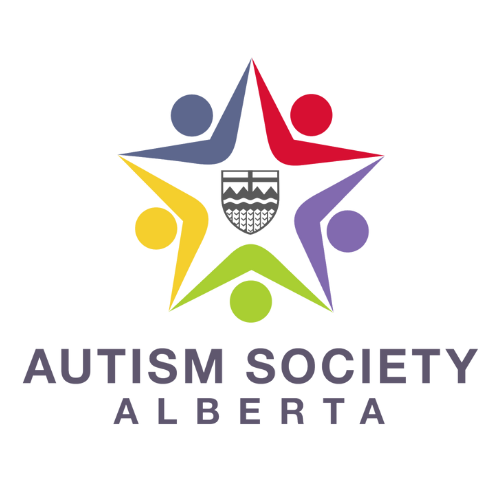Siblings
 Conor, my son on the spectrum, has a younger brother named Shea, age 5. I write so much about Conor that this time I wanted to write something about his brother and how autism has impacted him. I dedicate this article to all the amazing siblings out there – you are not only a brother or sister, but also an advocate, therapy assistant, friend, and so much more to our ASD children!
Conor, my son on the spectrum, has a younger brother named Shea, age 5. I write so much about Conor that this time I wanted to write something about his brother and how autism has impacted him. I dedicate this article to all the amazing siblings out there – you are not only a brother or sister, but also an advocate, therapy assistant, friend, and so much more to our ASD children! loves to play, and he brings Conor ‘out of himself’, because he won’t take no for an answer! It has been amazing to watch that bond and friendship grow. He loves to watch Conor’s basketball games, and now Conor is happy to watch him play hockey. They encourage and motivate each other, and Shea is a great role model for Conor.
loves to play, and he brings Conor ‘out of himself’, because he won’t take no for an answer! It has been amazing to watch that bond and friendship grow. He loves to watch Conor’s basketball games, and now Conor is happy to watch him play hockey. They encourage and motivate each other, and Shea is a great role model for Conor.
January Update from Autism RMWB
On December 16th we held our Annual Christmas Party. All the kids loved watching Christmas movies, having a blast in the Bouncy Castles, making arts and crafts, and enjoying all the snacks made by our very helpful volunteers. The best part of the day was when the REAL Santa came to visit everyone!
-
Support 4 Moms Society monthly support meetings
-
A February 11th Paint Night Fundraiser
-
March Bingos
-
Charlie and the Chocolate Factory Fundraiser for Easter
-
Dunvegan Gardens Easter Egg Hunt
-
Toonie Swim Day for Autism Awareness Day on April 7th
-
Swedish Rags Fundraiser
-
Hanging Baskets for May
Yoga and Exercise Can Help Those with ASD Manage Meltdowns and Self Regulation
From the Autism Awareness Centre, Inc. Blog:
 For many of us, the New Year brings resolutions that often include exercise and diet goals for renewed health. Regular exercise is essential to your good health, but did you know it can also help a person with autism self-regulate and manage stress? Coach Dave Geslak has created exercise programs for people on the autism spectrum using structure and visual supports. The Exercise Connection program emphasizes these five points:
For many of us, the New Year brings resolutions that often include exercise and diet goals for renewed health. Regular exercise is essential to your good health, but did you know it can also help a person with autism self-regulate and manage stress? Coach Dave Geslak has created exercise programs for people on the autism spectrum using structure and visual supports. The Exercise Connection program emphasizes these five points:- Body Image
- Posture
- Motor Coordination
- Muscular Fitness
- Cardiovascular Fitness
- Child’s pose with “Bee Breath”:
In this posture your child sits on their knees and places their forehead on the floor with their arms stretched out behind them. Good Night Yoga makes this pose even more fun and calming by adding a “bee’s breath”. In order to breathe like a bee your child simply inhales from the floor up to sitting, takes a deep, deep breath, and buzzes like a bee all the way back down to the post on the floor. Children love to buzz like a bee, and the big breaths are perfect for soothing the nervous system.
- Cat-Cow Pose:
In Good Night Yoga, this pose is just the cat part, but the cow is pretty fun too! Normally they are paired together. To do the poses your child should get on their hands and knees, and can start by inhaling into the cat, followed by exhaling and “mooing” into the cow. The deep breathing with gentle spine movement in this pose helps release tension and calm the body.Cat: Inhale and arch your back like a cat as high as you can.
Cow: Exhale and arch your back the other way so that your belly drops towards the mat and you are looking at the ceiling. Let your exhale come out as a loud MOOOOO if you like.
- Tree Pose: The concentration required to get into, and hold, this pose is great for quieting the mind. To get into Tree Pose, have your child pick which leg they feel most balanced on. Then they lift the other leg and place it on the thigh at – or above – the knee, as high up as they can. Once they can get their balance – and they might need to use their arms for this – they can then place their hands together as if in prayer, and breathe deeply for as many breaths as they can.
Tips: This pose can be pretty funny, as most people will flop about a bit at first. It can be fun for a child to see which leg they are stronger and more balanced on – there is usually one side that is easier. If this is too difficult, the child can back up against a wall, and use the wall to support them while they find their balance.
- Child’s pose with visualization: Child’s pose can be a very comforting “safe space”. The entire spine is supported on your own legs, and it offers a deep place to relax with a similar “curled up” feeling that many people find soothing when they are overwhelmed. To do this pose, your child simply goes into the face down posture of the child’s pose of the first posture, and stays there breathing deeply. They can place their hands before them on the floor, or behind them.
Tip: It can be good to take this a step further by having the child visualize something they find soothing. For some children this can be inhaling pink clouds, or floating on clouds. It’s important to find something that YOUR child finds comforting and soothing for this visualization, as some children might find clouds scary or disorienting. Visualization – or meditation- can be a very powerful tool for self-regulation.
Functional Neuroimaging of High-Risk 6-Month-Old Infants Predicts a Diagnosis of Autism at 24 Months of Age
 These significant findings demonstrate early detection and diagnosis of ASD in six-month-old infants with high familial risk with over 96 percent accuracy. Although there were only 11 kids in the diagnosed group, and the findings must be replicated with a larger sample size, this neuroimaging study contributes immensely to autism research. This is especially true for the early identification of infants with ASD before other symptoms (e.g. behavioural symptoms) develop, which is usually around 24 months of age or later. Furthermore, this study contributes to the advancement of possible research in the future that would look at effective interventions for six-month-old infants at risk for ASD.
These significant findings demonstrate early detection and diagnosis of ASD in six-month-old infants with high familial risk with over 96 percent accuracy. Although there were only 11 kids in the diagnosed group, and the findings must be replicated with a larger sample size, this neuroimaging study contributes immensely to autism research. This is especially true for the early identification of infants with ASD before other symptoms (e.g. behavioural symptoms) develop, which is usually around 24 months of age or later. Furthermore, this study contributes to the advancement of possible research in the future that would look at effective interventions for six-month-old infants at risk for ASD.Emerson, R., Adams, C., Nishino, T., Hazlett, H., Wolff, J., Zwaigenbaum, L., . . . IBIS Network. (2017). Functional neuroimaging of high-risk 6-month-old infants predicts a diagnosis of autism at 24 months of age. Science Translational Medicine, 9(393) doi:10.1126/scitranslmed.aag2882
We Want to Hear From You!
Two Sides to One Story
 There is only so much that anyone can understand about another person’s situation. You can empathize with a friend, family member, or colleague about their own particular struggles or issues. You can study the parts of the situation intellectually and try to apply logical solutions that have research behind them. You can be a supportive listener, be active in helping them, and can try your best to put yourself in their shoes and step up to help. But you can never truly know how it feels to live their experience, just as they can never truly know how it feels to be you.
There is only so much that anyone can understand about another person’s situation. You can empathize with a friend, family member, or colleague about their own particular struggles or issues. You can study the parts of the situation intellectually and try to apply logical solutions that have research behind them. You can be a supportive listener, be active in helping them, and can try your best to put yourself in their shoes and step up to help. But you can never truly know how it feels to live their experience, just as they can never truly know how it feels to be you. I hate to be told “I told you so…”, but I can imagine that all of those wonderful parents would have the right to at least think it, even if they would never say it to my face. I could finally realize the true depth of feeling that parents can have for child, especially if they are struggling in any sense. The experience of facing a long-term or serious health concern for your child is not something that another person can fully grasp, no matter how much they do all of the incredibly kind things I mentioned at the top of the article.
I hate to be told “I told you so…”, but I can imagine that all of those wonderful parents would have the right to at least think it, even if they would never say it to my face. I could finally realize the true depth of feeling that parents can have for child, especially if they are struggling in any sense. The experience of facing a long-term or serious health concern for your child is not something that another person can fully grasp, no matter how much they do all of the incredibly kind things I mentioned at the top of the article.Share Your Experiences with the Disability Tax Credit
 Autism Canada is proud to be taking a leadership role for all Canadians as it pertains to issues surrounding the Disability Tax Credit, as well as the secondary problem of how this impacts people’s Registered Disability Saving Plans.
Autism Canada is proud to be taking a leadership role for all Canadians as it pertains to issues surrounding the Disability Tax Credit, as well as the secondary problem of how this impacts people’s Registered Disability Saving Plans.
Happy Birthday
 It was my grandmother’s birthday yesterday. I know this because my mother sent a message telling me that it was my grandmother’s birthday. Two hours later, she sent another, more pointed message telling me to wish my grandmother a happy birthday, please. I expect to receive a similar message in April on my father’s birthday, whenever that is.
It was my grandmother’s birthday yesterday. I know this because my mother sent a message telling me that it was my grandmother’s birthday. Two hours later, she sent another, more pointed message telling me to wish my grandmother a happy birthday, please. I expect to receive a similar message in April on my father’s birthday, whenever that is. I have struggled for most of my life to translate what I feel into a language that others can understand. To show that I care, even when the little rituals intended to signal that affection confuse and bewilder me. With closer friends, I have carved my own ways of demonstrating my regard for them. I have fashioned a thousand “I love yous” out of studying their interests, learning their preferences, remembering all of their little habits and jokes, and listening to their thoughts and troubles without judgement. For all that I struggle to be thoughtful in the way that it is usually conceived, I have tried to be a person with whom others can be their true selves, with whom they can feel understood. I hope that my friends and family know that.
I have struggled for most of my life to translate what I feel into a language that others can understand. To show that I care, even when the little rituals intended to signal that affection confuse and bewilder me. With closer friends, I have carved my own ways of demonstrating my regard for them. I have fashioned a thousand “I love yous” out of studying their interests, learning their preferences, remembering all of their little habits and jokes, and listening to their thoughts and troubles without judgement. For all that I struggle to be thoughtful in the way that it is usually conceived, I have tried to be a person with whom others can be their true selves, with whom they can feel understood. I hope that my friends and family know that.







 Cat: Inhale and arch your back like a cat as high as you can.
Cat: Inhale and arch your back like a cat as high as you can.





